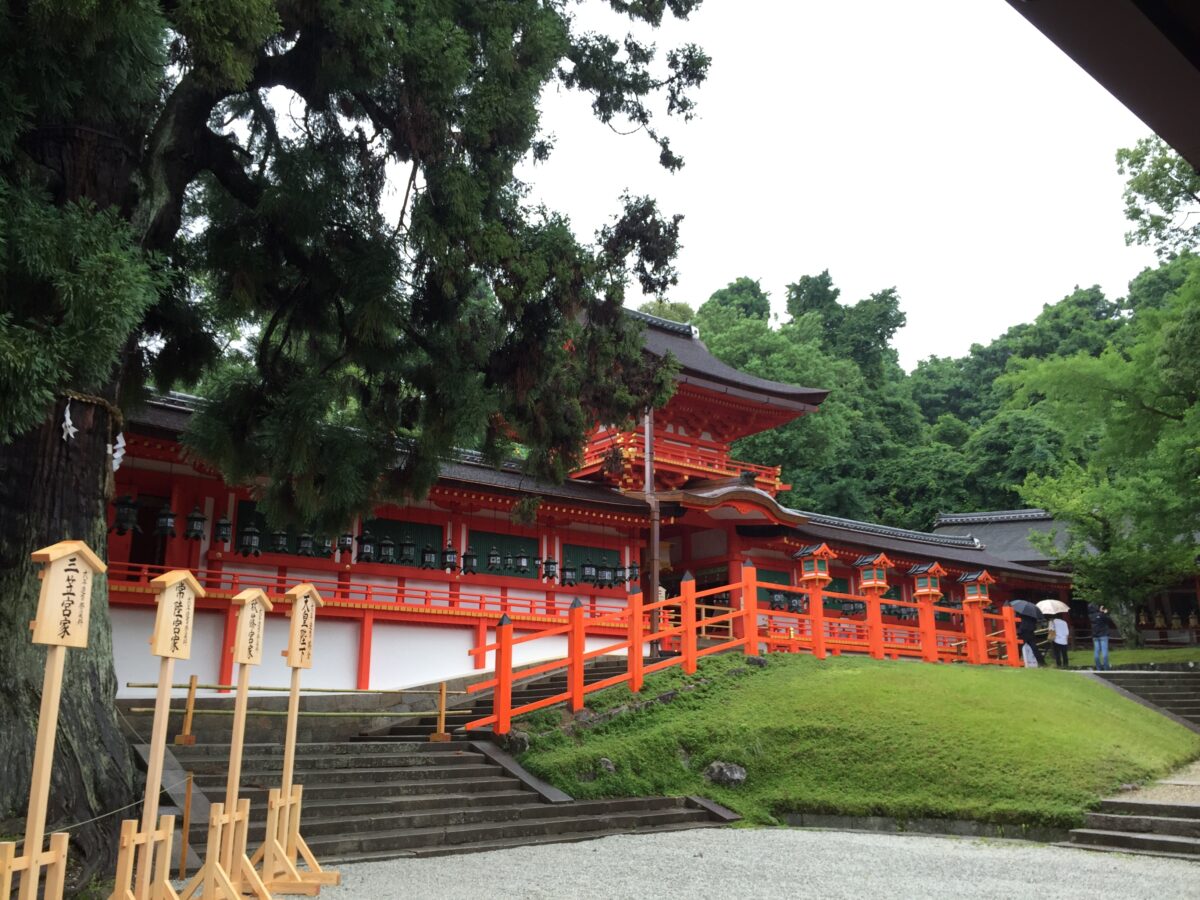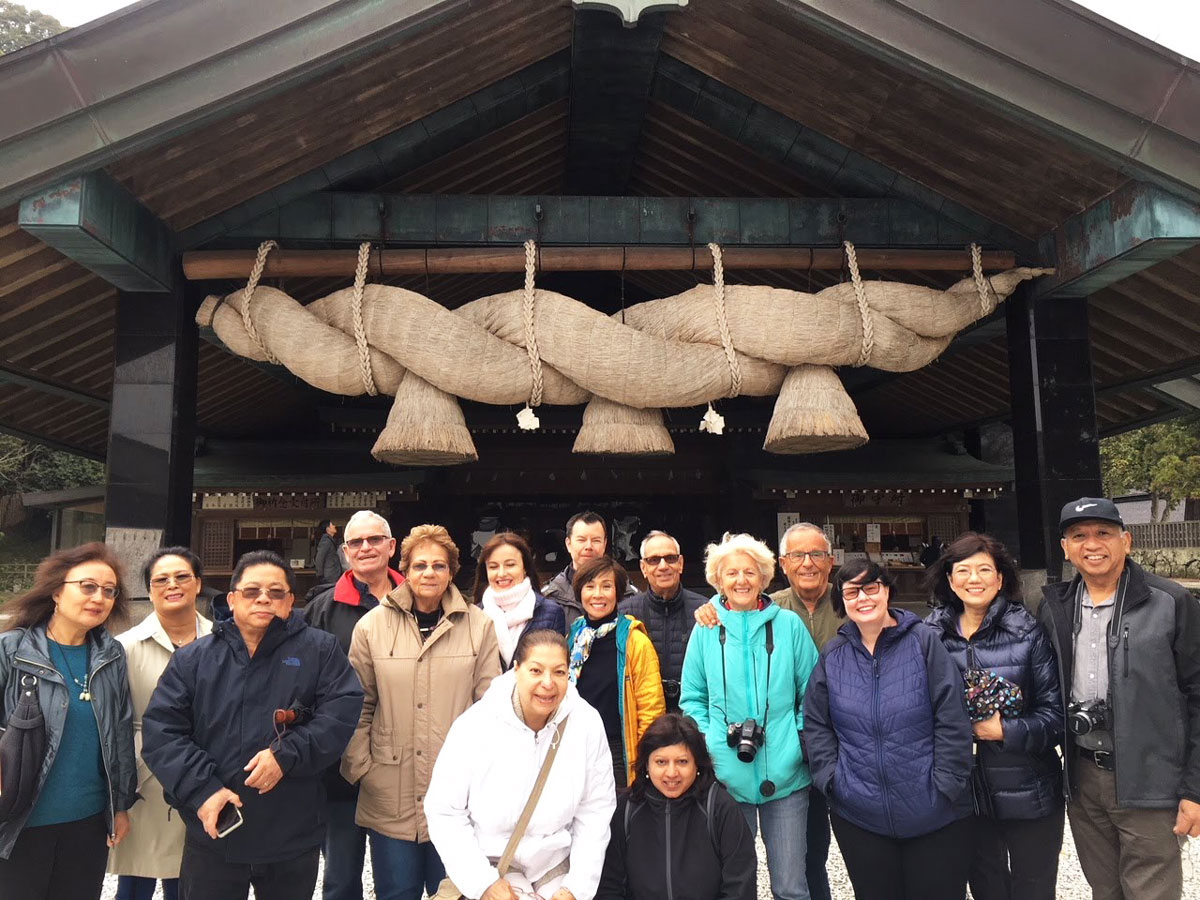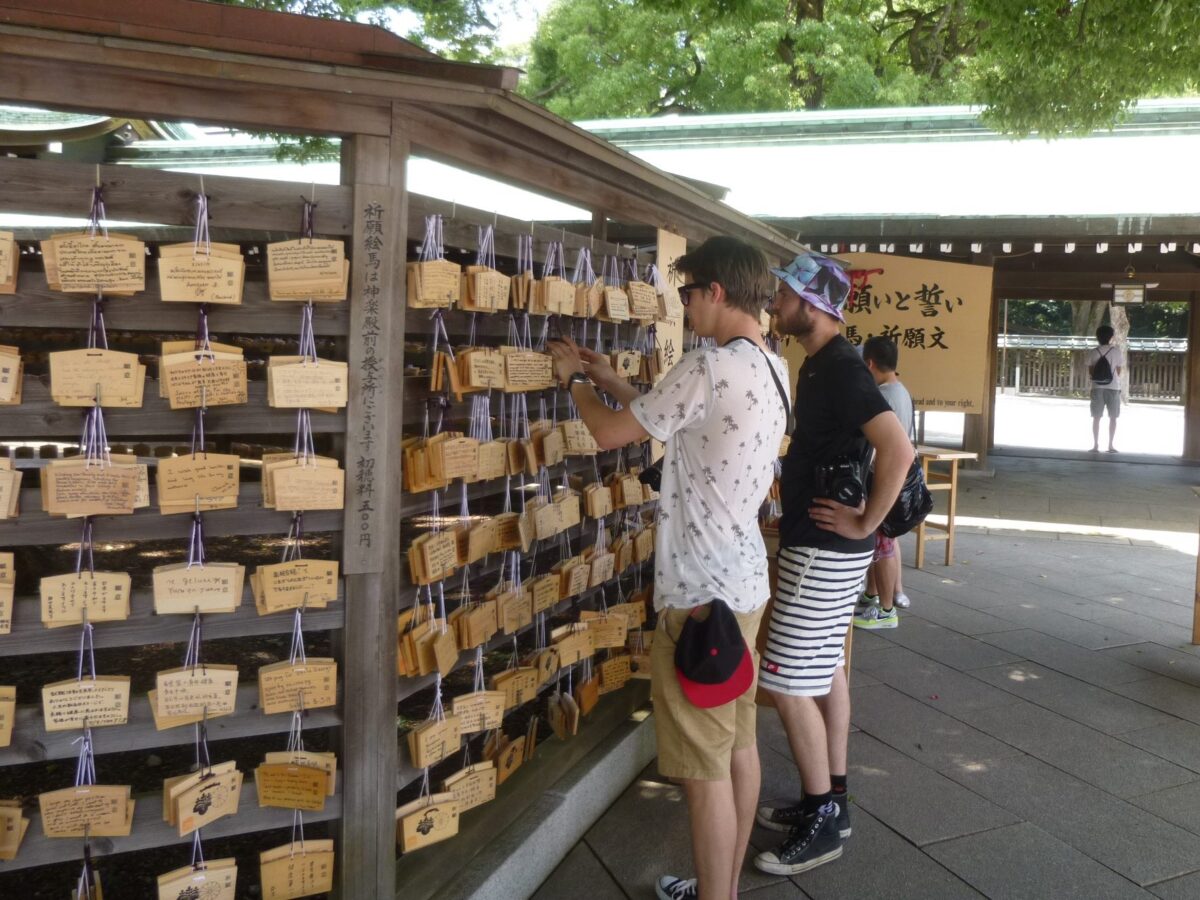Shinto has been the main religion in Japan since ancient times, centering on the ideas of Japanese intimacy with nature and ancestor worship. All things on earth were brought forth and ruled over by the gods who reside throughout all nature. Mountains and trees often become an object of worship, and the shrine archway and sacred Shinto ropes mark the gods’ sacred areas.


When shrines are built, objects of worship in which a god or gods reside are enshrined there. Shinto constitutes the foundation of the sensibility of Japanese people. Furthermore, most present-day Japanese rather than placing a religious kind of faith in Shinto feel their cultural identity through it. Shinto religion has supported the Emperor system in a religious sense, and even now its ancient customary practices remain as the religion of the Imperial Family.
Religious festivals throughout the year mark the passage of time and keep traditions alive. One of the best examples of this can be observed around the New Year holiday, when virtually all Shinto shrines are thronged with worshippers for the first shrine visit of the New Year and customary fortune telling for the year to come.
Torii Gates, Shinto Shrines’ Entrance
Torii gates are the archway that can always be seen at the approach to a Shinto shrine, and they have become a recognizable symbol of Shinto shrines. Two crosspieces are set on top of two upright pillars. It is thought that originally they were for roosters to perch on, as roosters are the ones to wake up the sun in the morning and thus have a special significance to Japanese people. The Sun Goddess is the most important god in Japan, being the embodiment of the rising sun and thus Japan itself. On seeing a torii, many Japanese people bow towards the gate to honor the god residing there, even if they don’t enter the shrine itself.
Shimenawa, the Border Between Earth and Shinto Spirits
The shimenawa is the rope made of rice straw you will see hanging under many torii gates or in front of the area where you go to pray. You can also see them in sumo wrestling, sometimes the wrestlers wear them and the ring they fight in is also a shimenawa. These ropes are the border between the earthly and the heavenly. Under the shimenawa you can often see some zigzag white papers hanging, these are called shide and symbolize lightning, a symbol of communication between the gods and the earth.
Kannushi (Shinto Priests)
Kannushi are Shinto priests who are ministers at a Shinto shrine. They serve the divinities by making offerings and reciting Shinto prayers. They also perform the Shinto purification for people who come to worship and they conduct weddings.
While working as a priest, kannushi are also involved in shrine administration. Management, for example, of sales of written oracles, talisman, and good luck charms, and accounting for money offerings, all come under the direction of the priests.
Omikuji (Fortune Tellings)
Omikuji are written oracles, obtained by drawing a lot in which the good luck or bad luck. One’s overall fortune can range from outstanding to average to bad, covering various aspects of life such as academics, business, marriage proposals, and victory or defeat. The good part is that if you don’t like the fortune you drew, you can always hang it at one of the provided racks so that it will not come true. If you do like what you read you can bring it home with you.



Omamori (Lucky Charms)
Omamori are said to summon good fortune and expel evil, so divinities’ names, prayers, or temple and shrine names are written on a piece of wood or scraps of cardboard. They are usually sold at shrines and temples. You can get lucky charms for a variety of things, such as traffic safety, passing a school exam, business prosperity, good health, and easy childbirth.
Omamori are put in pouches and kept on one’s person, hung in cars, placed in the home, or attached to pillars or gates. It is common to present them to family members or to a lover who is leaving for travel or doing dangerous work and also to pray for their safety and health.
Osaisen (Money Offerings)
Osaisen are offerings of money that are made when worshipping at Shinto shrine and Buddhist temples. There is an offertory box, where worshippers pray, tossing in any amount of money they wish, or else they offer money as thanks for prayer that have been answered. It is said that this money is used for the upkeep of the temple or shrine grounds by the family who owns the temple or shrine.
Ema (Votive Tablets)
Ema literally means ‘horse picture’, because horses were seen as the vehicles of the gods and were thus popular ‘items’ to donate if you really needed something done by the gods. Of course, donating horses is very expensive and to make it affordable for the masses they made it possible to donate a proverbial horse to the gods by donating an ema instead.
Ema are small wooden planks on which you can write your wish. Ema can have all kinds of pictures on them, usually, the picture is related to the temple or shrine where you buy them, or it is a picture of the current Chinese zodiac animal. You will see areas with hanging ema, displaying everybody’s wishes in almost every temple or shrine.
Every now and then the people working at the temple or shrine removes the old ema to make space for new ones, the old ones are then ritually burned so that the wishes fly to heaven and will come true. While using ema used to be a Shinto tradition, nowadays this is done in Shinto shrines as well as in Buddhist temples.
Your Japan Tour
As seasoned Japan experts, we create perfect Japan package tours including destinations related to Shinto. Check out our group tours and private tours, or contact us to start planning your unforgettable holiday to this fascinating country full of once-in-a-lifetime experiences, culture, history, nature, and delicious food!